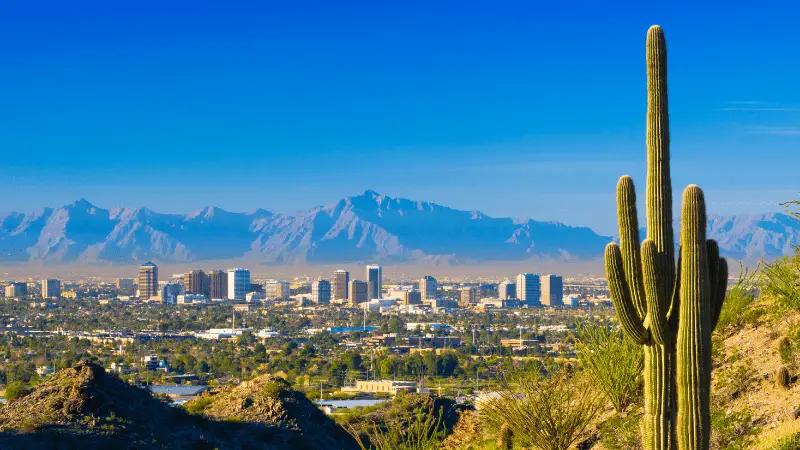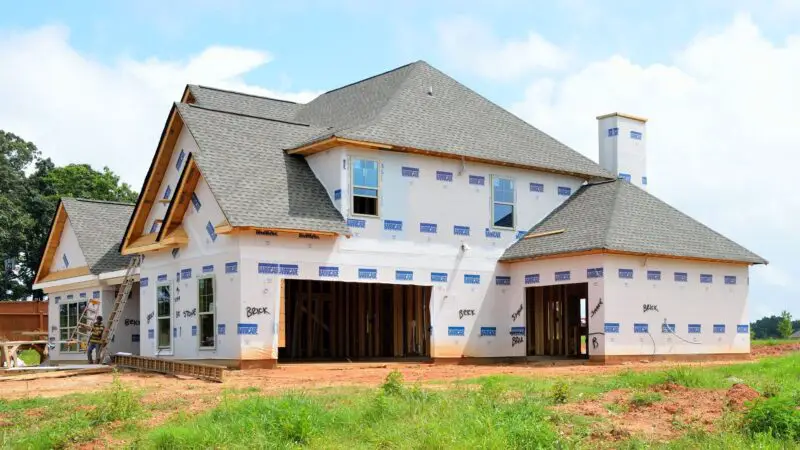Sunshine and warm weather are two big draws that bring people to Arizona, but there are plenty of other reasons NOT to move to Phoenix. For one, that warm weather is often way too warm, and that sunshine can bring on allergy triggering heat. Not to mention average salaries tend to be lower in Phoenix.
But these are just a few reasons that might prevent you from moving to Phoenix. If you are considering moving to Phoenix, Arizona, stick around and keep reading for 11 surprising reasons not to move to Phoenix.
The Arizona Heat Is An Allergy Trigger
Phoenix is known for its sunny weather and desert climate. While the heat in the city, especially during the summer months, is expected, there are some side effects you may not have taken into account.
People travel to Phoenix all the time to enjoy the mild winters and the sunshine, but the climate provides a great environment for allergies, especially due to ragweed. Those suffering from them looking to live in Phoenix will have to stock up on antihistamines and keep an eye on them.
Salaries in Arizona Are Lower
While the cost of living in Phoenix is 5% lower than the national average, salaries also trend lower. This can have long-term effects, especially with the rising costs of real estate and utilities in the area.
The average salary in Phoenix is around $50,474 per year. Well-paying jobs will usually pay around $20 per hour. In comparison, those working in San Francisco will earn around $96,500 per year or $36 per hour.
Arizona Can Be Very Conservative
Phoenix is traditionally a Republican city, though, in recent years, the Democrat party has started recovering ground. Despite this, Phoenix continues to be a mostly conservative city, which can present challenges to the more liberally inclined.
While Phoenix at least has a more Democrat presence, the surrounding Maricopa County is still firmly a red area. If you move to the Phoenix area, you may be faced with steadfast traditional values and mentality.
It Can Feel Remote in Much of Arizona
Phoenix is a vibrant city, but it can feel disconnected from everything else. Unlike many other locations in the United States, getting anywhere outside of Phoenix will take time. While there is plenty to do in the city, there is little variety in what to explore beyond it.
If you are used to living in areas like California, you may have to readjust your expectations. Tucson and Flagstaff are over 100 miles away, while Las Vegas is over 200. Jumping on a plane is the quickest way to get to other destinations.
Public Transport in Arizona Is Limited
Downtown Phoenix has a great public transportation rating, but it is the highest in the city for a reason. The further away you go from this central Phoenix area, the fewer options you will encounter, and with far more limited schedules.
If you move to Phoenix, having access to a car at all times is almost essential, especially if you won’t live downtown.
There Is No Landscape Diversity in Arizona
Phoenix is an area surrounded by stunning landscapes. From the impressive backdrop of Camelback Mountain to the rugged desert formations, there is much to discover there. Those moving to the city will be impressed with this new landscape.
However, after some time spent in Phoenix and Maricopa County, you may find the lack of landscape diversity more on the repetitive side. To find any difference in the topography, you must travel far from the city.
Arizona’s Cost of Living Is Rising
Phoenix has been historically known to have a lower cost of living than other big cities in the United States. The city is growing at a fast pace, which is having a huge impact on costs. While salaries are remaining low, the cost of living has been steadily increasing.
In a year, the overall cost of living has gone up by 2.2%. The most affected sectors are housing, food, and transportation.
Arizona Has Plenty of Critters
As you might expect, the great weather and almost-constant sunshine in Phoenix is beneficial to all, including insects and wildlife. This is especially noticeable during the typical monsoon season in Arizona summers.
Going from June to September, the monsoon season brings increased activity of flies, moths, and ants. There are also tarantulas, ticks, and wasps to contend with. Preventative measures (aka bug spray) are an absolute must for protecting yourself, and your home! But be warned, some of these creepy crawlers aren’t phased by spray or traps, you’ll still encounter your fair share of critters living in Phoenix.
Arizona Has One of the Busiest Airports
Phoenix Sky Harbor International Airport tends to rank among the top 10 busiest airports in the country and the top 30 in the world. It is one of the most sizable commercial airports and sees immense amounts of traffic every day.
While this is great for connections to other cities, the experience of facing such a busy airport can be stressful.
Housing Prices Are Inflating in Arizona
Inflation is affecting the whole country, but it is very noticeable in Phoenix’s real estate sector. While housing costs went up by 4.5% as a national average, in Phoenix, they went up by 7.3%.
This has had a marked impact on real estate investments and may affect the budget of those considering moving there.
Dust Storms Are Common in Arizona
Dust storms in Phoenix, also known as haboobs, are completely unpredictable and expected at any time. These weather fronts can take newcomers by surprise and range in severity. They can last from several minutes to an hour.
Those driving during a dust storm should pull off the road as soon as safe to do so.
Conclusion
Phoenix is a city that may require a huge lifestyle change for those moving there. Newcomers to the area should take these reasons into consideration before committing to a long-term move.





